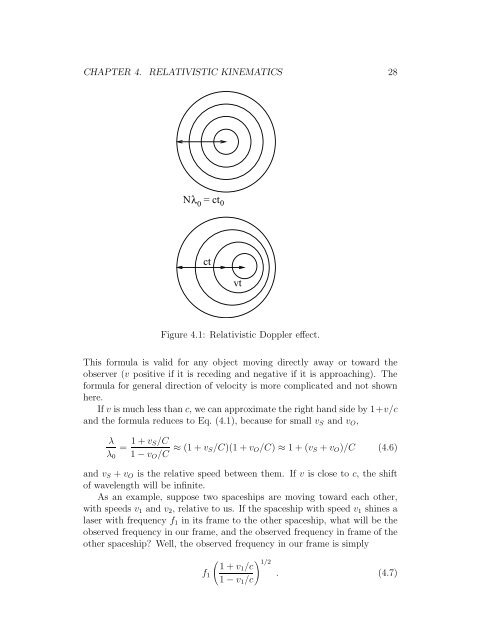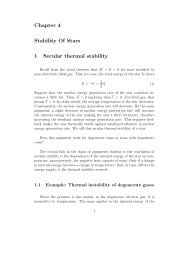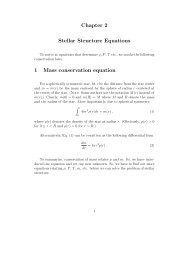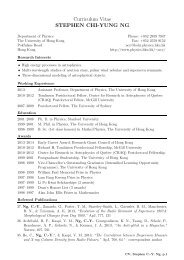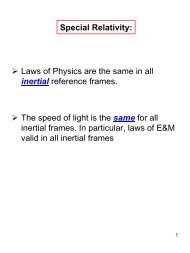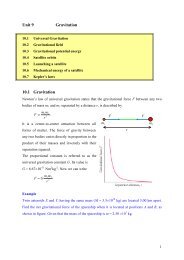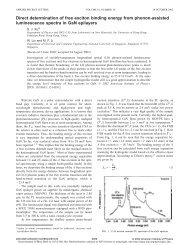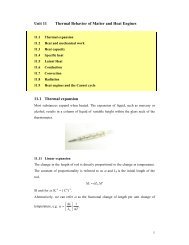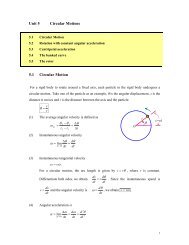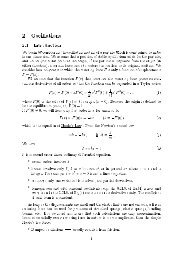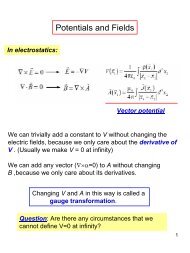here - Department of Physics, HKU
here - Department of Physics, HKU
here - Department of Physics, HKU
Create successful ePaper yourself
Turn your PDF publications into a flip-book with our unique Google optimized e-Paper software.
CHAPTER 4. RELATIVISTIC KINEMATICS 28<br />
N<br />
= ct<br />
λ 0 0<br />
ct<br />
vt<br />
Figure 4.1: Relativistic Doppler effect.<br />
This formula is valid for any object moving directly away or toward the<br />
observer (v positive if it is receding and negative if it is approaching). The<br />
formula for general direction <strong>of</strong> velocity is more complicated and not shown<br />
<strong>here</strong>.<br />
If v is much less than c, we can approximate the right hand side by 1+v/c<br />
and the formula reduces to Eq. (4.1), because for small v S and v O ,<br />
λ<br />
λ 0<br />
= 1 + v S/C<br />
1 − v O /C ≈ (1 + v S/C)(1 + v O /C) ≈ 1 + (v S + v O )/C (4.6)<br />
and v S + v O is the relative speed between them. If v is close to c, the shift<br />
<strong>of</strong> wavelength will be infinite.<br />
As an example, suppose two spaceships are moving toward each other,<br />
with speeds v 1 and v 2 , relative to us. If the spaceship with speed v 1 shines a<br />
laser with frequency f 1 in its frame to the other spaceship, what will be the<br />
observed frequency in our frame, and the observed frequency in frame <strong>of</strong> the<br />
other spaceship? Well, the observed frequency in our frame is simply<br />
( ) 1/2<br />
1 + v1 /c<br />
f 1 . (4.7)<br />
1 − v 1 /c


